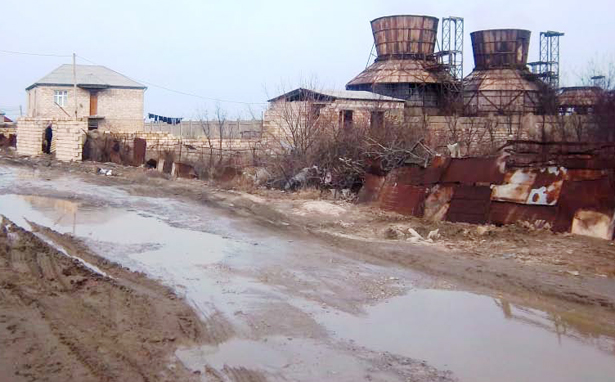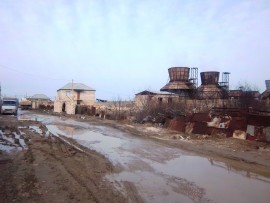Source #9
Chemical Manufacturing
Description
The U.S. Bureau of Labor Statistics categorizes the following as chemical manufacturing: basic chemicals including pigments, dyes, gases and petrochemicals; synthetic materials like plastics; paint products, cleaning products; and other chemicals including film, ink and explosives. Pharmaceutical manufacturing is also considered under the umbrella of chemical manufacturing. These products and their related chemicals are essential to society and are needed to facilitate our daily life. They treat medical problems, improve standards of living and are relied upon for a vast range of activities. However, during the production of these chemicals and products, dangerous by-products and waste are often generated. A common feature in almost all of the organic chemical industry is the use of VOCs as solvents and raw materials. The manufacture of solvents is also a major part of the chemical industry. The dye industry and pesticide industry are part of the chemical industry and are major contributors to the pollution problems of chemical manufacturing but they are addressed separately in this report.

Chemical manufacturing is a large source of pollution worldwide and can be directly tied to close to 200 of the polluted sites in the Blacksmith Institute’s database. Potentially putting approximately 5.3 million people at risk of exposure. The majority of sites are in China, Eastern Europe and South Asia. Eastern Europe carries a disproportionate number of the at risk population with over 3 million people at risk of exposure to pollutants from chemical manufacturing. The chemical manufacturing industry is truly a global industry with 16 different countries contributing to the trading and selling of chemicals, and likely there are contaminated chemical manufacturing sites all over the world.[1]
Part of the reason for the expansive reach of chemical manufacturing is the diverse and varied types of sectors and activities that are included in it. The EPA defines chemical manufacturing as “creating products by transforming organic and inorganic raw materials with chemical processes.”[2] These are further broken up into commodity and specialty chemicals. Commodity chemicals are basic singular chemicals in ongoing production at industrial plants. Specialty chemicals are batches of combination chemicals made at the request of certain industries and produced on an as needed basis.[3] New chemicals are introduced and old chemicals are withdrawn constantly, changing the chemical manufacturing market frequently, making it difficult to monitor and evaluate. The sheer size of the industry makes it difficult to monitor as well; it accounts for approximately 7 percent of global income and 9 percent of international trade,[4]
Exposure Pathways
Chemicals can be released through the same pathways as other pollutants, including emissions from heating and processing, accidental release of dust or other particulates, accidental spills and improper disposal of solid waste and wastewater. Once in the environment exposure media includes air, water, soil and food. In the Blacksmith Institute’s database, which focuses on chemical dumps and abandoned sites, the exposure pathways are evenly split between inhalation of contaminated dust and soil, ingestion of contaminated water and food and inhalation of contaminated gases or vapor. The chemical manufacturing industry is the largest single consumer of water by sector in all OECD countries.[5] The large amount of process water required provides many opportunities for pollutants to be released through wastewater.
Top Pollutant(s)
The pollutants found in the largest quantities at chemical manufacturing sites investigated by Blacksmith include pesticides and volatile organic compounds. However, other pollutants found include arsenic, cadmium, cyanide, mercury, chromium and lead. The top pollutants by DALY calculation are chromium and lead, as DALYs could not be calculated for the other more pervasive pollutants. Reference the pollutant sections for more information on health effects of chromium and lead.
It is important to note that although DALY calculations could not be made for volatile organic compounds, exposure to VOCs released from chemical manufacturing sites potentially puts more than 1.5 million people at risk at the sites investigated by Blacksmith. VOCs are low molecular weight chemicals made from carbon and hydrogen, and often including oxygen, nitrogen, chlorine and other elements. Because of their low molecular weight, VOCs convert to vapor easily, and VOC vapors are emitted from certain products and processes. There are thousands of VOCs, many of which are familiar compounds in everyday life, such as ethyl alcohol, propane, mineral spirits, and the chemicals in gasoline, kerosene and oil. While many VOCs are relatively non-hazardous (aside from their flammability), there are thousands of VOCs that are toxic, and some can cause eye, nose and throat irritation and headaches, while others are known carcinogens. Some examples of toxic VOCs include benzene, formaldehyde, toluene, vinyl chloride and chloroform. VOCs come from a wide variety of products, most of which are used daily by society. The list includes most fuels, paints, stains and lacquers, cleaning supplies, pesticides, plastics, glues, adhesives and refrigerants. VOCs, including many more uncommon and toxic types, are very commonly used in manufacturing processes as solvents or raw materials in the production of plastics, chemicals, pharmaceuticals, and electronic products.
Global Burden of Disease
Blacksmith Institute estimates that chemical manufacturing contributes an estimated 750,000 DALYs. A key limitation of our approach was our inability to calculate DALYs from VOCs and pesticides. Insufficient dose-response and disability weight information resulted in the complete exclusion of VOCs and pesticides. The estimate is therefore a considerable under-calculation as it only takes into account the health impacts of lead and chromium.
What is being done?
Creating standards for the strategic and sound management of chemicals is essential to reducing the risk of exposure. Nationally and internationally both private and public organizations including the United Nations are working to create globally applied standards for the management of chemicals so that the need for chemicals and the hazardous effects of pollution can be balanced.[6]
For sites that have already been polluted, remediation efforts can reduce the level of pollution. The Gorlovka Chemical Plant is an abandoned industrial site located in the Ukraine. The plant, a former chemical and explosives production facility, has thousands of tons of toxic chemicals leaking into soil and groundwater including a highly toxic chemical intermediary called mononitrochlorobenzene (MNCB). The plant posed a significant and immediate threat to the local population because MNCB was leaking from open drums and tanks directly into groundwater and running off the property through surface waters. Beginning in 2009, Blacksmith conducted a detailed site assessment. Based on a demonstration project done by Blacksmith, the Ukraine government implemented a project to remove the MNCB. The MNCB has now been safely removed from the area and stored properly. Other issues at the site are still being resolved.
Footnotes:
[1] Buccini, J. “The Global Pursuit of the Sound Management of Chemicals.” The World Bank Group. Washington, DC. 2004. Available at: http://siteresources.worldbank.org/INTPOPS/Publications/20486416/GlobalPursuitOfSoundManagementOfChemicals2004Pages1To67.pdf
[2] “Sector Programs: Chemical Manufacturing”. U.S. Environmental Protection Agency. 2011. Available at: http://www.epa.gov/sectors/sectorinfo/sectorprofiles/chemical.html
[3] “Sector Programs: Chemical Manufacturing”. U.S. Environmental Protection Agency. 2011. Available at: http://www.epa.gov/sectors/sectorinfo/sectorprofiles/chemical.html
[4] Buccini, J. “The Global Pursuit of the Sound Management of Chemicals.” The World Bank Group. Washington, DC. 2004. Available at: http://siteresources.worldbank.org/INTPOPS/Publications/20486416/GlobalPursuitOfSoundManagementOfChemicals2004Pages1To67.pdf42 43
[5] Ibid.
[6] Buccini, J. “The Global Pursuit of the Sound Management of Chemicals.” The World Bank Group. Washington, DC. 2004. Available at: http://siteresources.worldbank.org/INTPOPS/Publications/20486416/GlobalPursuitOfSoundManagementOfChemicals2004Pages1To67.pdf44 45

-
Source #1
Battery Recycling
-
Source #2
Lead Smelting
-
Source #3
Mining and Ore Processing
-
Source #4
Tanneries
-
Source #5
Industrial/Municipal Dumpsites
-
Source #6
Industrial Estates
-
Source #7
Artisanal Gold Mining
-
Source #8
Product Manufacturing
-
Source #9
Chemical Manufacturing
-
Source #10
Dye Industry
-
The Remaining Five Sources



